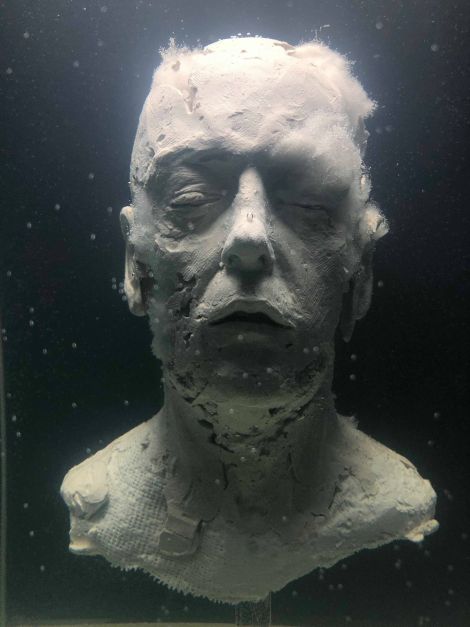Vestige is part of Master of Arts in Visual Art (MAVA) graduate Jacques van der Merwe’s exploration into the relationship between the fragile nature of the body and the fading of memory. These works form a connection between the figure and the trace through the duration of time. They request viewers to consider the significance of forgetting and being in the now.
Some of these works draw from Marc Augé’s, the three forms of forgetting, Return, Suspense and Re-beginning. Requesting the audience to revisit the work to experience the slow deterioration of the human form as the oscillating water in the glass containers have impact on the plaster of Paris, cottonwool, and bandages as medium. In turn, we become conscious of our transitory nature as humans and the value of forgetting. This is achieved through the trace, following theories of Aby Warburg, Walter Benjamin, and Georges Didi-Huberman.
Jacques van der Merwe’s art explores the human condition through various mediums including drawing, painting, video, and sculpture. Working in materials such as plaster of Paris, wax, water, and bandages, he is particularly interested in the fading of memories, traces, entropy, and the immigration process.
Image (right) Jacques van der Merwe.
Jacques van der Merwe, TINY EXPLOSION, 2020, Canon 5dmkII, 100mm fixed focal micro lens, 120 FPS, 35:37 minutes.
An explosion taking place in a dream-like landscape or an outer space environment, that repeats itself as a “catabolic effect” somewhere between consciousness and unconsciousness, acting as a psychogeographical landscape.
This work explores Didi Huberman’s idea of empreinte, the “flash” or “constellation” that occur when traditional or past practices collide with contemporary methods. Thus, creating new or reworked images, changing their meanings from the past into something different in the present. Similarly, this work mirrors the empreinte, but the concept is condensed over a shorter period when we view a repeated image, we can experience it slightly different each time. This is due to various factors, one being our ability to forget, “related to contact with loss” and “loss of contact”.
Each time making up our own different, yet unique narrative as we perceive the same image again and again. Marginally shifting the concept or meaning of what the image portrays. Mimicking the idea of the empreinte through our visual encounter, relating to the repeated image, creating a “ghostly” temporality that continuously “shift” our understanding from what has been to the present.
Follow Jacques van der Merwe on Instagram @jacques_vandermerwe_art








